
Combatting Energy Inefficiency in Chicago’s Skyscrapers with Commercial Window Film
The architectural marvels that line Chicago’s skyline are not just a testament to human ingenuity but also to a lurking problem of massive energy inefficiency. As businesses within these towering structures grapple with the city’s extreme seasonal changes, from sweltering summers to frigid winters, one overlooked culprit exacerbates their energy woes: untreated windows. The absence of commercial window film in Chicago’s business landscape is a glaring oversight in the battle against rising energy costs and environmental impact.
Large glass panels, though aesthetically pleasing, turn these buildings into greenhouses during summer, letting in an excess of sunlight and heat. Conversely, in winter, the same windows become conduits for heat escape, straining heating systems to maintain a comfortable indoor temperature. This problem is not just about discomfort but translates into skyrocketing energy bills, setting back businesses financially and contributing to the city’s larger environmental footprint.
It’s clear that the traditional approach to managing building temperatures in Chicago’s commercial spaces is becoming unsustainable. The urgency to find a cost-effective solution that can also contribute to environmental conservation efforts is more critical now than ever. This sets the stage for a transformative solution in the form of commercial window film, an innovation that could redefine energy efficiency for Chicago’s business sector.
Understanding Chicago’s Energy Conundrum
In the bustling heart of Chicago’s commercial sector, a silent issue looms large over the heads of business owners and facility managers alike – the struggle for energy efficiency. Chicago, known for its dramatic seasonal shifts, poses unique challenges. The city’s harsh winters demand high indoor heating levels, while the summer sun necessitates cooling buildings to maintain a comfortable working environment. This continuous cycle results in exorbitant energy costs that can severely impact a business’s bottom line.
The nuances of this problem are multifaceted. On one hand, there’s the financial strain of soaring utility bills, with energy expenses often ranking as one of the top overhead costs for commercial entities. On the other, there’s the environmental impact, with buildings contributing significantly to the urban heat island effect, exacerbating the city’s carbon footprint. The issue is compounded by the aging infrastructure of many of Chicago’s commercial buildings, where outdated windows offer poor insulation and contribute to energy waste. In essence, the quest for energy efficiency is not just a matter of financial prudence but also an environmental imperative. The need for a solution that addresses these concerns holistically is palpable among Chicago’s business community, making the relevance of energy-efficient products like commercial window film undeniable.
Impacts and Examples of Inefficient Energy Use in Chicago’s Commercial Buildings
In the bustling heart of Chicago’s commercial districts, the unseen culprit of drastic energy inefficiency often lies within the very windows of the buildings themselves. Consider the financial and environmental strain faced by a well-known Chicago hotel, which reported an astonishing 25% increase in its annual heating and cooling costs due to poor window insulation. The large glass facades, while architecturally appealing, became a significant liability, leaking energy and leading to exorbitant utility bills.
Another striking example comes from a commercial office tower in downtown Chicago. The building’s management found that their employees were increasingly dissatisfied with their workplace’s thermal comfort, negatively impacting productivity. Investigations revealed that the building’s outdated single-pane windows were the root cause, allowing heat to escape during winter and infiltrating heat during summer. Not only did this result in a less comfortable working environment but also in a noticeable spike in energy consumption to maintain desired indoor temperatures.
These real-life examples shed light on the urgent need for an energy efficiency solution that can address the dual issues of cost and comfort present in Chicago’s commercial real estate. Commercial window film emerges as a promising solution to these pervasive problems, hinting at its critical role in transforming the city’s business landscape towards sustainability and efficiency.
Transforming Chicago’s Business Landscape with Commercial Window Film
Picture Chicago’s skyline, not just as a testament to architectural prowess but as a symbol of sustainability and energy efficiency—thanks to the transformative power of commercial window film. Imagine the myriad of office buildings, retail spaces, and commercial properties basking in the glow of enhanced sunlight, minus the adverse effects of excessive heat and glare.
In this envisioned Chicago, businesses no longer grapple with the high costs of keeping interiors cool or the constant battle against the fading of merchandise and interior furnishings. Commercial window film stands as a guardian, protecting against the relentless sun, which once led to spiked energy bills and compromised comfort. Think of the monumental savings as cooling costs plummet, all while maintaining an eco-friendly footprint.
Envisage a workspace where the clarity of natural light permeates without the discomfort of heat, where employees’ productivity is boosted simply because the environment is optimized for comfort and well-being. Scenarios of discomfort from sitting near windows on sunny days become tales of the past, as the thermal insulation properties of window film create a consistently pleasant interior atmosphere.
This is not a distant utopia. The shift towards energy-efficient buildings, safeguarded by commercial window film, offers a stark contrast to the current challenges faced by Chicago’s businesses. No longer are establishments at the mercy of the climate, fluctuating energy costs, and the sun’s damaging effects. The application of commercial window film is a testament to how innovation can not only overcome present-day challenges but also pave the way for a more sustainable and cost-efficient future in the urban business landscape.
Maximizing Energy Efficiency: The Unseen Benefits of Commercial Window Film in Chicago’s Business Landscape
In the bustling business environment of Chicago, companies constantly seek innovative solutions to foster both sustainability and cost-efficiency in their operations. With the adoption of commercial window film, the ideal scenario unfolds, significantly diverging from the energy-intensive and environmentally taxing present scenario faced by countless establishments across the city.
Commercial window film steps beyond the traditional methods of energy saving with its multifaceted benefits that directly cater to the unique challenges of Chicago’s commercial landscape. Unlike the current practice of frequent HVAC system adjustments to counteract the effects of the city’s varied climate, window film offers a sustainable and cost-effective alternative. By blocking a significant portion of solar heat gain through windows, it maintains indoor temperature stability without overreliance on heating and cooling systems.
Furthermore, this innovative solution surpasses current energy-saving measures by contributing to the prolonged lifespan of HVAC systems, thus fostering a sustainable business operation model that aligns with environmental conservation efforts. It also substantially reduces glare and UV exposure, enhancing the workspace for employees and safeguarding interior furnishings from fade, which are issues inadequately addressed by conventional energy-saving strategies.
In embracing commercial window film, Chicago’s businesses stand to redefine their approach to energy efficiency, transcending the limitations of the present scenario and marking a crucial step towards a sustainable and cost-efficient future.
Maximizing Energy Efficiency with Commercial Window Film in Chicago
Chicago’s busy business landscape stands to gain significantly from the adoption of commercial window film. One of the major economic benefits is the reduction in energy costs. Through the insulation properties of window film, businesses can retain more heat during the cold Chicago winters and reflect heat during the scorching summer months, leading to substantial savings on heating and cooling bills.
Moreover, commercial window film contributes to the environmental sustainability goals of Chicago’s business community. By reducing energy consumption, businesses decrease their carbon footprint, playing a vital role in the city’s efforts towards sustainability. This not only benefits the environment but also enhances the social reputation of businesses as responsible and eco-friendly entities.
Lastly, the application of commercial window film can significantly enhance the comfort of workspaces. By mitigating glare and regulating indoor temperatures, employees can enjoy a more comfortable and productive working environment. This improvement in the workplace directly influences job satisfaction and overall well-being, showcasing the personal gains alongside the economic and social advantages of commercial window film in Chicago.
Maximizing Energy Efficiency: The Unseen Benefits of Commercial Window Film
Chicago’s dynamic business environment presents a multifaceted challenge to energy efficiency, with its towering skyscrapers and extensive commercial districts wrestling with escalating utility expenses. The quest for a sustainable and cost-efficient solution is more pressing than ever in this urban landscape. Commercial window film emerges as a pivotal answer to this pressing issue, serving as a bridge to a desirable state of reduced energy consumption and enhanced environmental stewardship.
Unlike conventional methods of energy saving, the application of commercial window film in Chicago’s architectural fabric offers a seamless transition to heightened efficiency without compromising the aesthetic or structural integrity of buildings. This innovative solution is not merely a band-aid but a transformative shift towards a greener, more sustainable operational model. It is designed to adapt to the unique climatic and urban demands of Chicago, ensuring businesses can thrive in a competitive environment while substantially cutting down on energy costs.
Imagine a future where the Chicago skyline is not only a symbol of architectural marvel but also a beacon of environmental sustainability and energy efficiency. Commercial window film is the catalyst for this change, embodying a critical leap from the current state of high energy consumption to a desired state of ecological harmony and economic savings. By integrating this technology, Chicago’s business landscape is poised to redefine the benchmarks of success through sustainability, marking a significant stride towards a greener tomorrow.
Maximizing Energy Efficiency: The Unseen Benefits of Commercial Window Film in Chicago’s Business Landscape
In the bustling streets and towering structures that define Chicago’s commercial landscape, energy efficiency has emerged as a pressing concern. The climatic extremes of the Windy City, from sweltering summers to frigid winters, present unique challenges for business owners striving to maintain comfortable, cost-effective, and energy-efficient workplaces. Enter commercial window film, Chicago’s unsung hero in the quest for energy sustainability and efficiency.
Commercial window film offers a simple yet highly effective solution to these energy challenges. By applying a thin, virtually invisible layer to your building’s glass surfaces, window film works to significantly reduce heat gain during summer and retain indoor heat during winter. This dual-action capability not only enhances the comfort of your commercial space but also leads to substantial cuts in energy consumption and costs. As a result, businesses can see a reduction in their overall utility bills, creating a more sustainable and eco-friendly operation.
Moreover, commercial window film also addresses the fading of interior furnishing and inventory due to UV exposure, and glare that can affect employee productivity and comfort. By filtering out the harmful UV rays and reducing glare, window film helps in protecting your investments and creating a more conducive work environment for your staff. This multifaceted solution not only solves the immediate problems associated with Chicago’s fluctuating temperatures and harsh sunlight but also contributes to the long-term sustainability goals of the local commercial sector.
Implement Commercial Window Film in Chicago Businesses Now
To begin experiencing the energy efficiency and financial savings that commercial window film offers in Chicago, follow this straightforward path. Firstly, reach out to our expert team for a comprehensive consultation that identifies your unique requirements. Next, we’ll schedule an on-site evaluation to understand your building’s specific needs, considering factors like window dimensions, orientation, and existing energy losses. After assessing your situation, we provide a tailored proposal, detailing the type of window film that best meets your needs, from solar blocking to privacy and security films. Installation is quick and minimally invasive, ensuring your business operations are hardly disrupted. Once installed, you can immediately begin to see reductions in glare, heat gain, and UV exposure, contributing to a more comfortable workplace and lower energy bills. Get in touch with us today to start the easy and rewarding process of enhancing your business with commercial window film. Your bottom line—and the environment—will thank you.

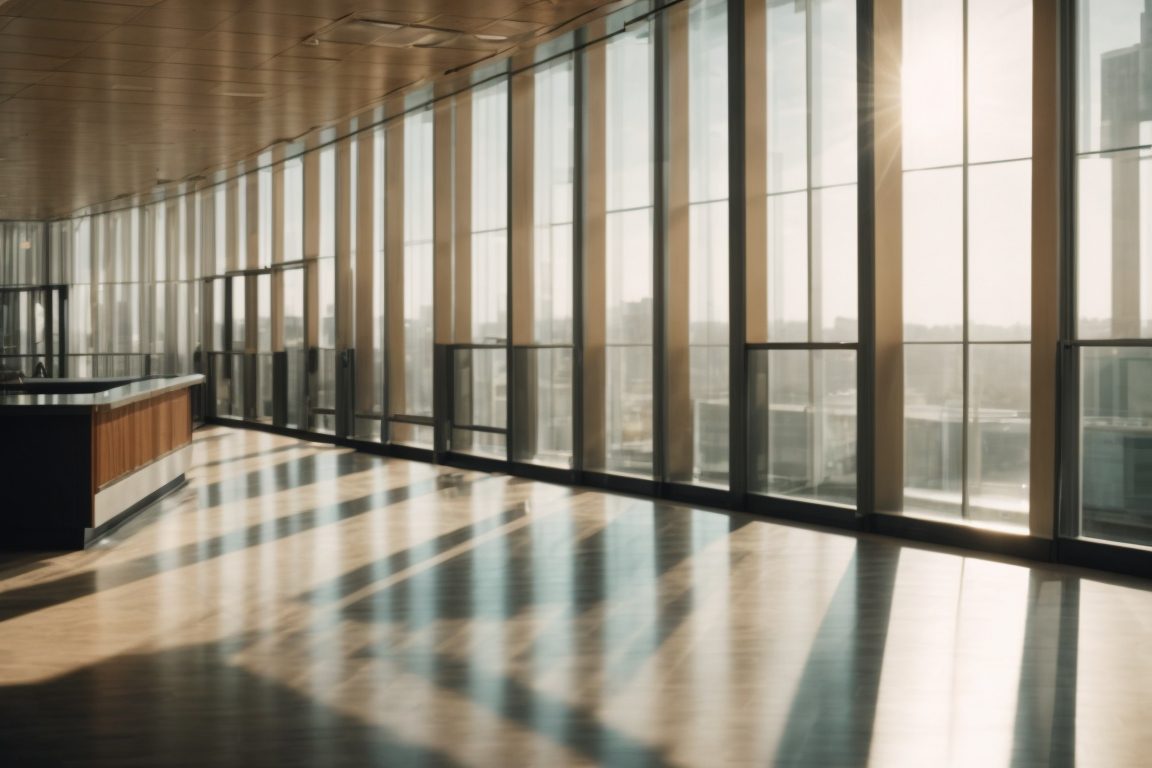
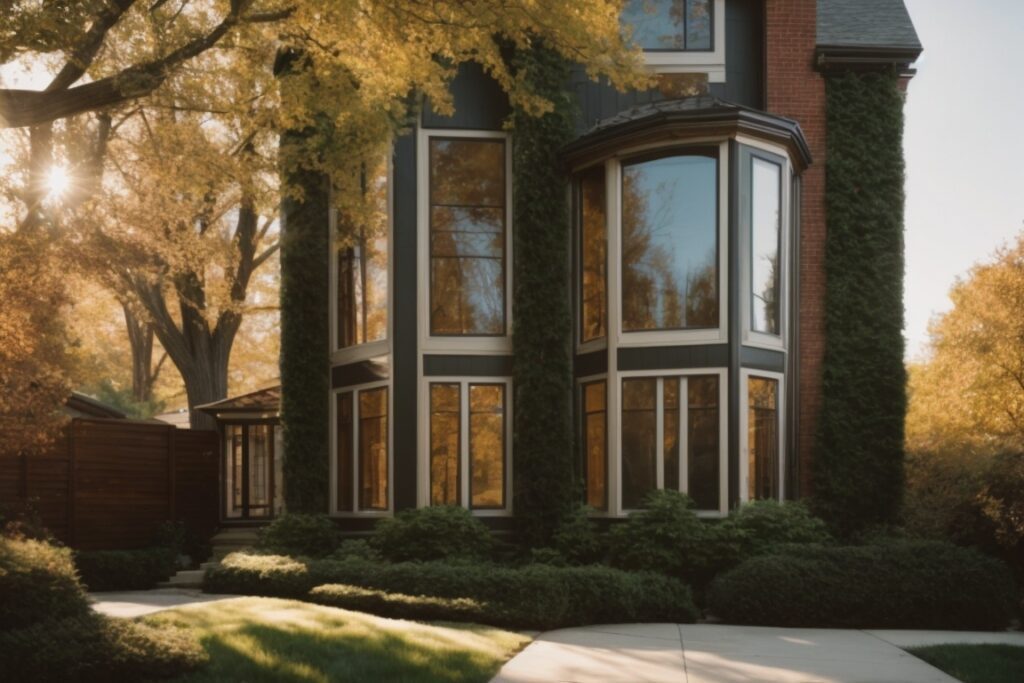
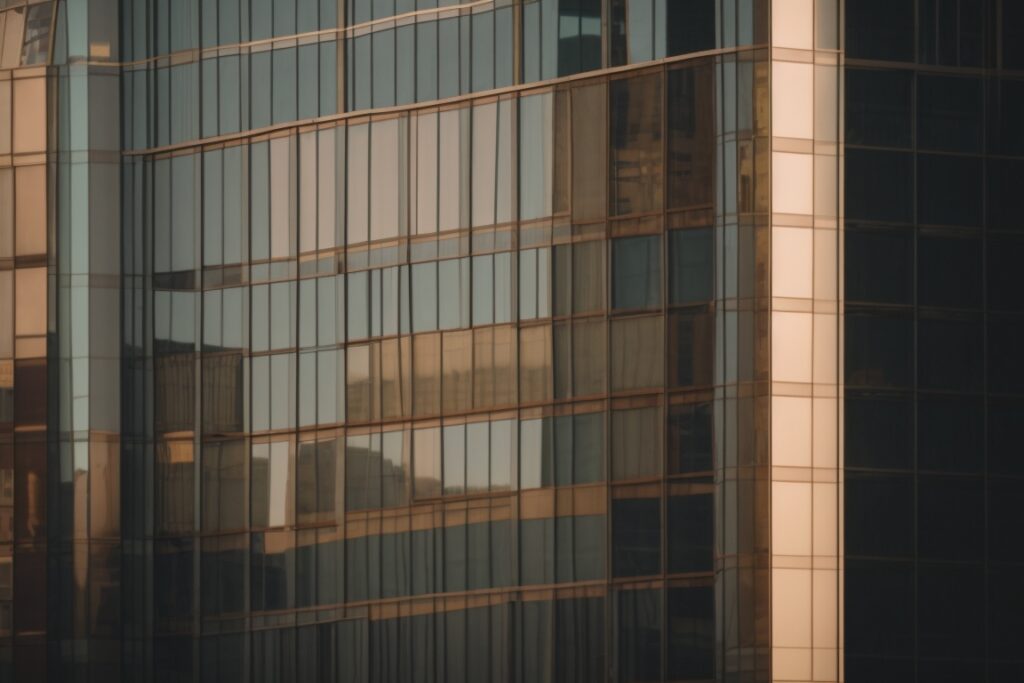
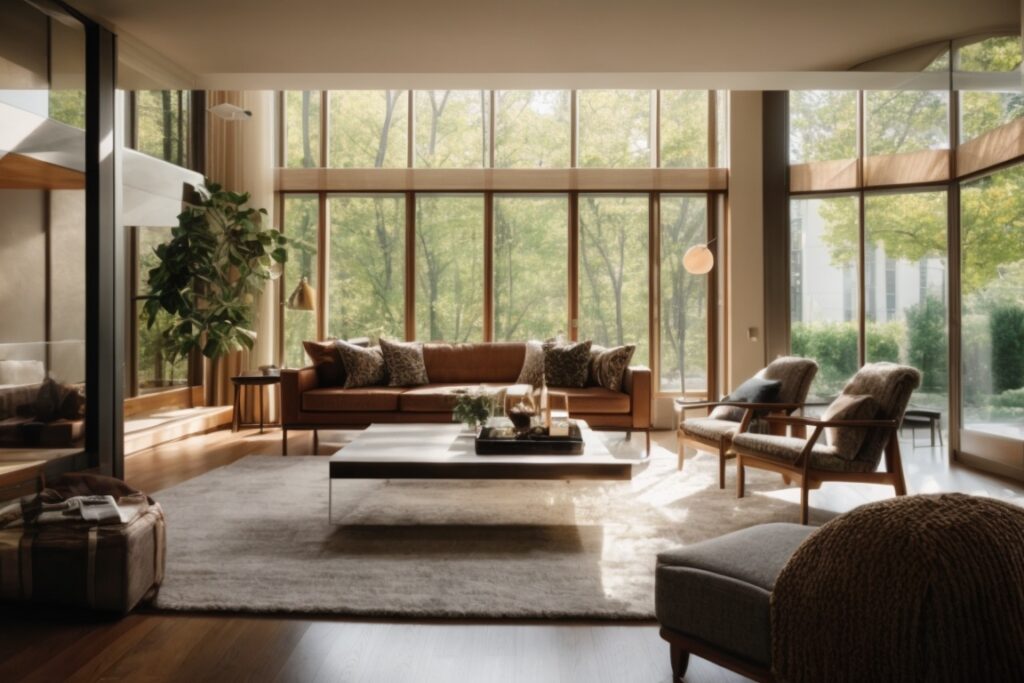
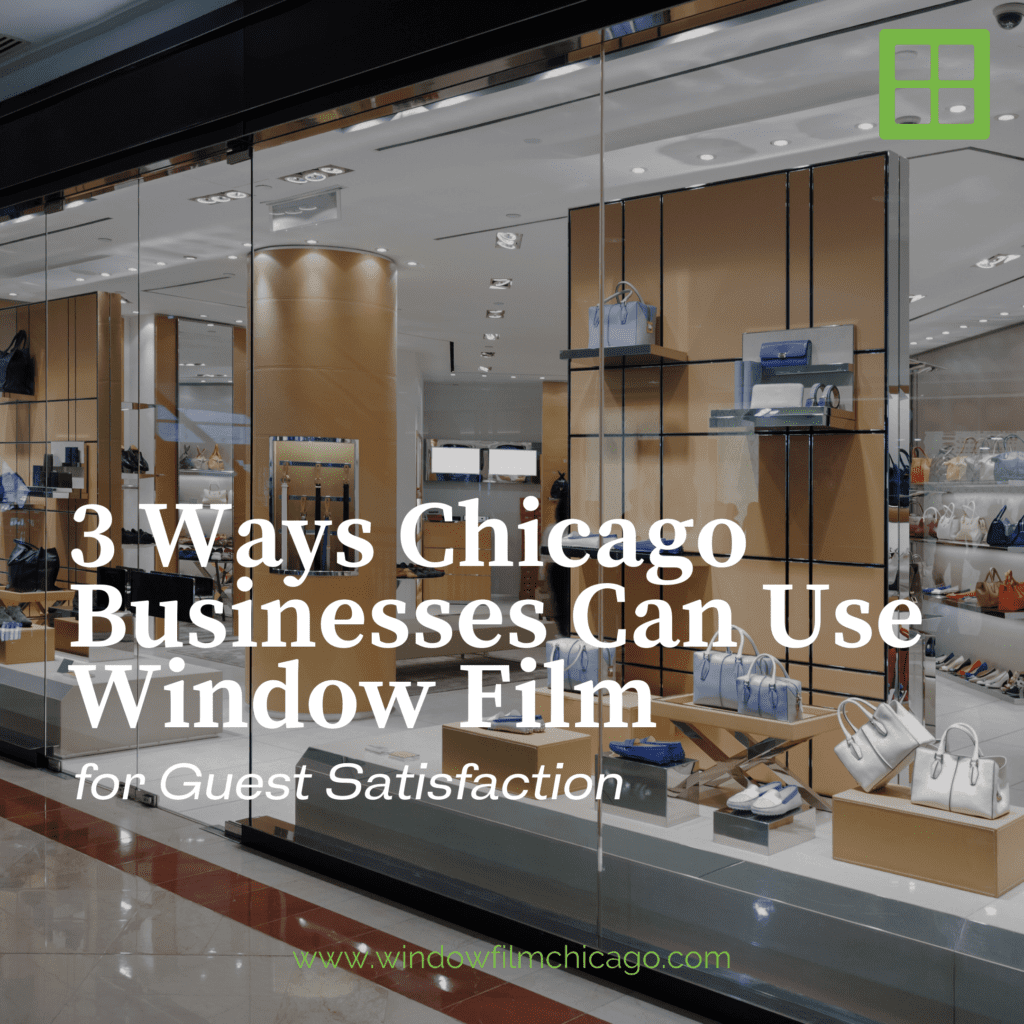
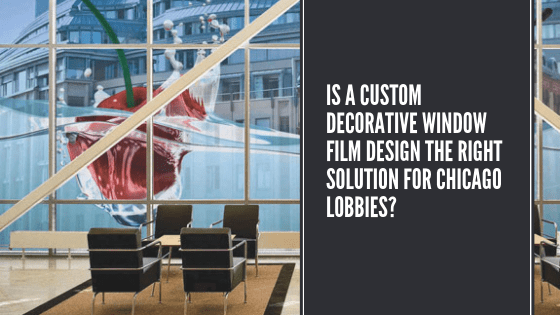
About The Author: Mike Kinsey
Mike Kinsey has more than a decade of experience installing window film in the Chicago area. His years of experience have allowed him to develop a deep familiarity with all of the different types and styles of window film on the market including the various security, privacy, decorative, and energy efficient options. Together, he and his team have completed hundreds of commercial and residential installs, totaling an accumulation of over 250,000 square feet. In addition to being an expert on top brands such as LLumar, C-Bond, HDClear, Solar Gard, Solyx, and Huper Optik, Mike is also certified by 3M, EnerLogic, and AIA for continuing education.
More posts by Mike Kinsey